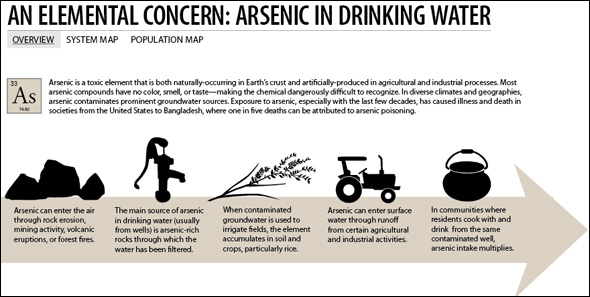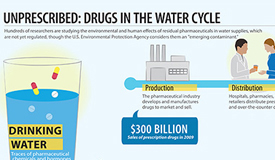Price Volatility: Food and Water Insecurities Require Deep Pockets
Adding pressure to already strained budgets, the price of food is expected to remain high and quite volatile on the heels of this year’s extreme floods and droughts. Though price increases are occurring globally, they are hitting hardest in the developing world.
Food prices — the focus of this year’s World Food Day, which took place on October 24 — hit record highs in February, when the United Nations Food and Agriculture Organization’s food price index reached 238 points. The index, which measures the international price of a basket of food commodities, had dropped to 225 points by September, but was still 30 points higher than in September 2010, according to the FAO’s most recent report.
Part of the problem is increased trading and speculation in commodity markets, like those in the U.S., NPR reported, citing a letter from 461 global economists. Another factor is water — either too much or too little — that is destroying crucial crop supplies in places like Thailand and the U.S.
The New Price of Food
In some developing countries, floods, droughts, and social conflicts are making food supplies so insecure that families have to spend 50 to 80 percent of their income to eat, according to a British Red Cross press release. To demonstrate this, the Red Cross set up a demonstration market in the United Kingdom, where a loaf of bread cost up to $US 11.47 (£7.20), and a pint of milk could reach a price of $US 6.37 (£4.00), 500 to 800 percent higher than the normal prices for these items.
While food price inflation is not expected to reach these levels in the U.S., the Consumer Price Index (CPI) for food is still projected to rise 2.5 to 3.5 percent in 2012, Bloomberg reported, citing a U.S. Department of Agriculture report. Although these projections are lower than the 3.5 to 4.5 percent increase seen in 2011, the report added that actual price levels will depend heavily on next year’s weather events and fuel prices.
For small countries that import the majority of food supplies, the reality will likely be much worse, according to the FAO’s State of Food Insecurity in the World 2011 report, released in October. These countries, many in Africa, are less likely to be able to insulate themselves from food-price volatility, which the report says is expected to continue in the future, due to climate change and increasing demand.
Source: Bloomberg, Food and Agriculture Organization of the United Nations, NPR, PRNewswire, The New York Times, Voice of America
A news correspondent for Circle of Blue based out of Hawaii. She writes The Stream, Circle of Blue’s daily digest of international water news trends. Her interests include food security, ecology and the Great Lakes.
Contact Codi Kozacek








Leave a Reply
Want to join the discussion?Feel free to contribute!